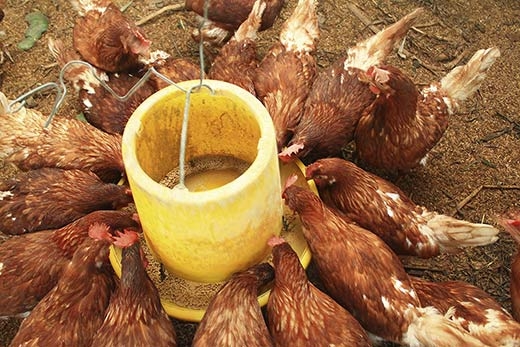
The review study also found that scientific studies have detected no differences in the nutritional makeup of the meat, milk or other food products derived from animals that ate genetically engineered feed.
The review, led by Alison Van Eenennaam, UC Cooperative Extension specialist in the Department of Animal Science at UC Davis, examined nearly 30 years of livestock-feeding studies that represent more than 100 billion animals.
Titled “Prevalence and Impacts of Genetically Engineered Feedstuffs on Livestock Populations,” the review article is now available online in open-access form through the American Society of Animal Science. It will appear in print and open-access in the October issue of the Journal of Animal Science.
Genetically engineered crops were first introduced in 1996. Today, 19 genetically engineered plant species are approved for use in the United States, including the major crops used extensively in animal feed: alfalfa, canola, corn, cotton, soybean and sugar beet.
Food-producing animals such as cows, pigs, goats, chickens and other poultry species now consume 70 to 90 percent of all genetically engineered crops, according to the new UC Davis review. In the United States, alone, 9 billion food-producing animals are produced annually, with 95 percent of them consuming feed that contains genetically engineered ingredients.
“Studies have continually shown that the milk, meat and eggs derived from animals that have consumed GE feed are indistinguishable from the products derived from animals fed a non-GE diet,” Van Eenennaam said. “Therefore, proposed labeling of animal products from livestock and poultry that have eaten GE feed would require supply-chain segregation and traceability, as the products themselves would not differ in any way that could be detected.”
Now that a second generation of genetically engineered crops that have been optimized for livestock feed is on the horizon, there is a pressing need to internationally harmonize the regulatory framework for these products, she said.
“To avoid international trade disruptions, it is critical that the regulatory approval process for genetically engineered products be established in countries importing these feeds at the same time that regulatory approvals are passed in the countries that are major exporters of animal feed,” Van Eenennaam said.
Collaborating on the study was co-author Amy E. Young in the UC Davis Department of Animal Science.
The review study was supported by funds from the W.K. Kellogg endowment and the California Agricultural Experiment Station of UC Davis.
UC Davis is growing California
At UC Davis, we and our partners are nourishing our state with food, economic activity and better health, playing a key part in the state's role as the top national agricultural producer for more than 50 years. UC Davis is participating in UC's Global Food Initiative launched by UC President Janet Napolitano, harnessing the collective power of UC to help feed the world and steer it on the path to sustainability.
About UC Davis
UC Davis is a global community of individuals united to better humanity and our natural world while seeking solutions to some of our most pressing challenges. Located near the California state capital, UC Davis has more than 34,000 students, and the full-time equivalent of 4,100 faculty and other academics and 17,400 staff. The campus has an annual research budget of over $750 million, a comprehensive health system and about two dozen specialized research centers. The university offers interdisciplinary graduate study and 99 undergraduate majors in four colleges and six professional schools.
Media contacts:
- Alison Van Eenennaam, Department of Animal Science, (530) 902-0875, alvaneenennaam@ucdavis.edu
- Pat Bailey, UC Davis News Service, (530) 752-9843, pjbailey@ucdavis.edu